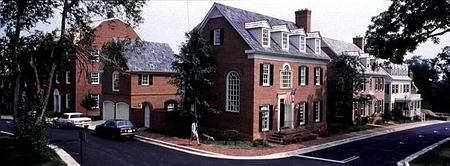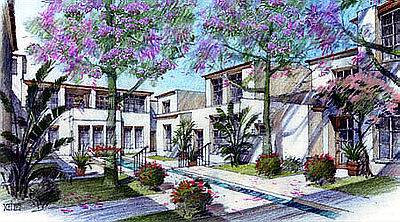|
The acknowledgement of architecture as an art integrating
different scales, --from the region to the level of material and constructive detail--, and encompassing the articulation
of particular buildings within their urban or landscape context is an essential aspect of any consistent urban design
task.
To hold up the pretention that issues of style, or of the characterization of buildings by means of
a coherent architectural language and an excellence of formulation of order, composition, syntax, as well as tectonics, detail
and ornament are secondary to urbanism, seems to be a daring proposition. It might be arguable in the sense that
the totality of something is more important than its parts taken separately. However it is a well-known evidence that the
whole can never be better than any of its parts.
Any sincere investigation into the best historical precedents of towns and cities will confirm that their
success, and even their very existence comes from a perfect marriage of architecture and urbanism. Any tactical schism between
architecture and urbanism can only generate confusion, as it denies the indissociable integration within architecture
of the city and all the means of arts and crafts traditionally associated to its building.

Jensen Development
by Seth Harry and Associates Inc. Architects and Planners
"What do real people say? When a building
is designed through any sort of public process, one where the users, or even passersby, have a voice, we know that the strong
preference is for traditional structures.
Democracy leads inexorably to traditional
architecture."
Andrés Duany

Kentlands, Street Corner
by Duany & Plater-Zyberk
(Photo by Duany & Plater-Zyberk)
"There are lessons to be learned in Kentlands at all
scales of urbanism and architecture. In particular, the importance of the clarity of the public space network, the relation
of that network to the public buildings and fabric, and finally to the urbanism of its architecture including the principled
use of regional materials and methods to achieve a real permanence, as well as its symbolic representation, of the architecture."
Michael Lykoudis
"Charleston Report, First CNU Council, Charleston 2001"
(Published by 'The Townpaper', Editor: Diane Dorney)

Meridian Court, Pasadena, California
View of Interior Courtyard
by Moule & Polyzoides, Architects and Urbanists
"At the heart of the Modernist argument
is the notion that architectural harmony, reference to the past, and tradition in general is mindless and oppressive.
The counter argument is that tradition
is a humane antidote to tyranny and selfishness.
In the words of Justice Felix Frankfurter:
The ultimate foundation of a free society is the binding tie of cohesive sentiment....Gather up the traditions of a people,
transmit them from generation to generation, and thereby create the continuity of a treasured common life which consitutes
civilization."
Andrés Duany
(The American Enterprise, January/February 2002)
|
